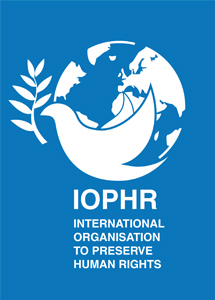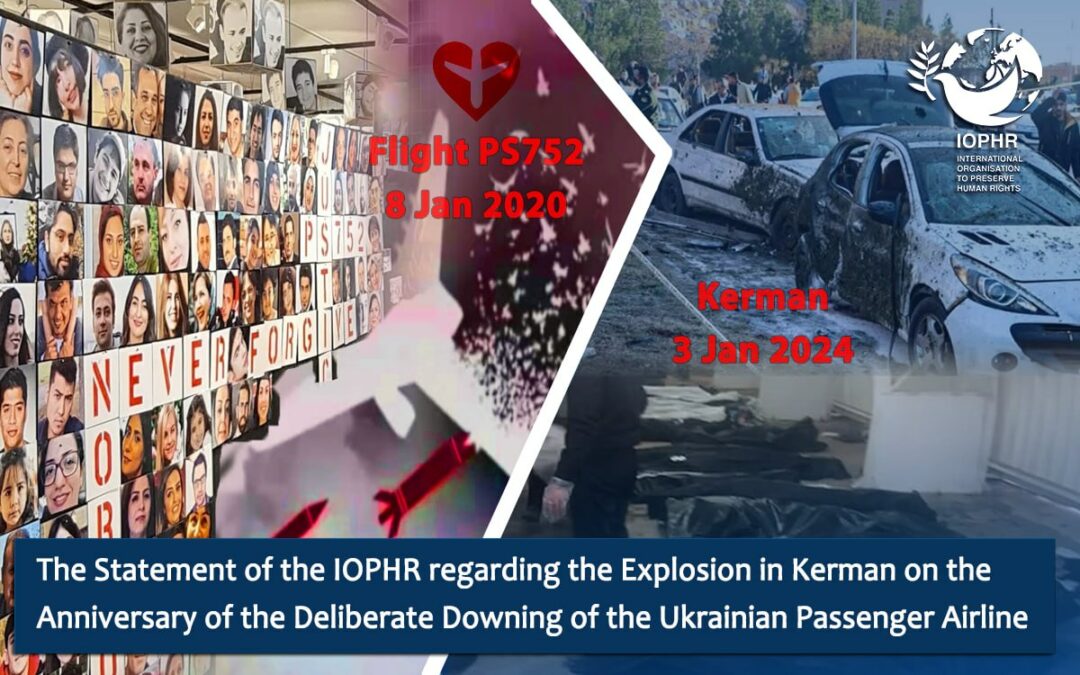The terrorist attack in Kerman orchestrated by the Islamic Republic is yet another miscalculated plot that will undoubtedly further hinder the regime’s longevity.
According to verified reports, two suspicious explosions occurred close to the burial site of terrorist Qassem Soleimani in the city of Kerman. This event resulted in the tragic loss of nearly 100 lives and left over 200 individuals injured.
This devastating incident, which occurred on the anniversary of the intentional downing of the Ukrainian passenger plane PS752 by the Islamic Revolutionary Guard Corps (IRGC), serves as a stark reminder to the world. It emphasizes that continued appeasement of the IRGC comes with a significant and irreversible cost to humanity. The IRGC had previously targeted the Ukrainian plane with two surface-to-air missiles, causing the deaths of all 176 innocent individuals aboard.
Similar to the misinformation surrounding the Ukrainian plane tragedy, the IRGC officials hastily and without substantial evidence, accused the Israeli army for the recent explosions near Soleimani’s grave. Notably, there are compelling pieces of evidence pointing to the planning and organisation of the IRGC in this heinous crime.
One significant observation is the absence of government officials and even Qassem Soleimani’s family members at the state ceremony organised for the terrorist who was taken out by the US government. Despite extensive publicity and tens of thousands of people, particularly government supporters, being mobilised to attend the event, not a single person from the government or Soleimani’s family participated in the ceremony. This discrepancy raises questions about the authenticity of the official narrative.
Secondly, officials from the primary hospital in Kerman reported being pre-informed about the explosion by security forces.
Thirdly, it appears that the cameras capturing and broadcasting the explosion live were strategically placed in advance, ensuring a minimum safe distance. This positioning, with prior notice, aimed at maximising the impact by recording and showcasing the heart-wrenching details of the disaster from the closest possible viewpoint, heightening the emotional response of viewers.
Fourthly, the primary and longstanding strategy of the IRGC, centered on “destabilisation” beyond Iran’s political borders, has consistently manifested as “creating crises” internally. Historical records reveal a pattern wherein the IRGC designs and implements new crises to deflect attention from its involvement in a previous crisis. In critical situations, it tends to commit additional crimes to shift public focus from its responsibility for a preceding offense.
Undoubtedly, the explosion in Kerman appears to have been orchestrated with the intention of attracting international attention and diverting public opinion away from the terrorist activities of Hamas. This aligns with the IRGC’s broader agenda, as evidenced by their collaboration with Hamas in committing terrorist acts. The terroristic crime of Hamas, in turn appears to have been orchestrated and aimed at deflecting attention away from various ongoing atrocities attributed to the IRGC, including the first anniversary of the massacre of Sunni worshipers on Bloody Friday in Zahedan, the anniversary of thousands of deaths in November 2017, and the anniversary of international protests against the government’s killing of Mahsa Amini.
Simultaneously, attributing this appalling crime to the ISIS terrorist group presents a repetitive, tedious, and precedented scenario. The International Organisation To Preserve Human Rights (IOPHR) points out that on October 26, 2022, coinciding with the anniversary of the Aban 97 protests, government officials immediately attributed a terrorist attack on the Shah Cheragh Mosque in Shiraz to ISIS, resulting in the death of 13 innocent people, without conducting any investigation. Such hasty attributions have, in the past, facilitated similar attacks.
Meanwhile, the Revolutionary Guards engage in a dual strategy, managing the falsification and promotion of superstitions globally to promote sanctification while orchestrating attacks on holy places to mobilise public sentiment against law-seekers and free thinkers. A notable example is the bombing of the shrine of the 8th Shiite Imam in Mashhad on 20th June 1994, aiming to suppress religious and ideological diversity, especially among Christians, leading to a scandal for the Ministry of Intelligence and the officials of the Islamic Republic of Iran.
Other instances of this two-pronged strategy involve the Quran-burning project globally by forces affiliated with IRGC proxies to divert global public opinion, especially among Muslims, away from tragic events in Iran.
A crucial aspect of the Kerman explosions is the Islamic Revolutionary Guard Corps’ attempt to minimise international repercussions. This time, they selected victims from their own supporters in a suicidal act to evade heavy international consequences, learning from the aftermath of the intentional downing of Ukrainian Airline PS752. This maneuver aims to halt or at least slow down the declining perception of the IRGC at the international level.
Whilst expressing sympathy for the survivors of this heinous crime, the International Organisation to Preserve Human Rights notes that many individuals within the government, particularly in middle and field ranks, themselves fall victim to the manipulations of this anti-human system. Their recovery should be prioritised by liberating them from the clutches of the anti-human system.
Given the Islamic Revolutionary Guard Corps’ historical pattern of creating crisies to manage existing ones, whilst causing endless pain and suffering, the Organisation to Preserve Human Rights calls on countries, institutions, and international organisations, especially the United Nations and the European Union, to exert pressure on the Islamic Republic of Iran. This pressure aims to secure the acceptance of an independent international fact-finding mission to investigate the Kerman explosion.
The International Organisation to Preserve Human Rights emphasises that the tragedy of the intentional downing of Ukrainian Flight PS752 by the Islamic Revolutionary Guard Corps underscores the destabilisation efforts of the Revolutionary Guards globally, especially in the Middle East, and recent findings indicating their leadership of organised crime in democratic societies. The IRGC and its terrorist proxies are perceived as waging an all-out combined war against the free world. It is crucial to note that the IRGC, according to its constitution, is a paramilitary force without recognition of political borders.
Therefore, the International Organisation To Preserve Human Rights calls on all governments, especially the European Union and the British government, to promptly prioritise the security of their citizens by including the Islamic Revolutionary Guard Corps in the list of terrorist groups.
The International Organisation To Preserve Human Rights
London, Brussels, Berlin, Toronto, Washington
7th January 2024

